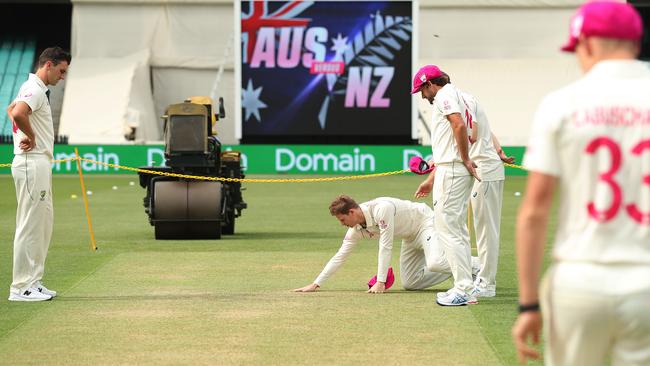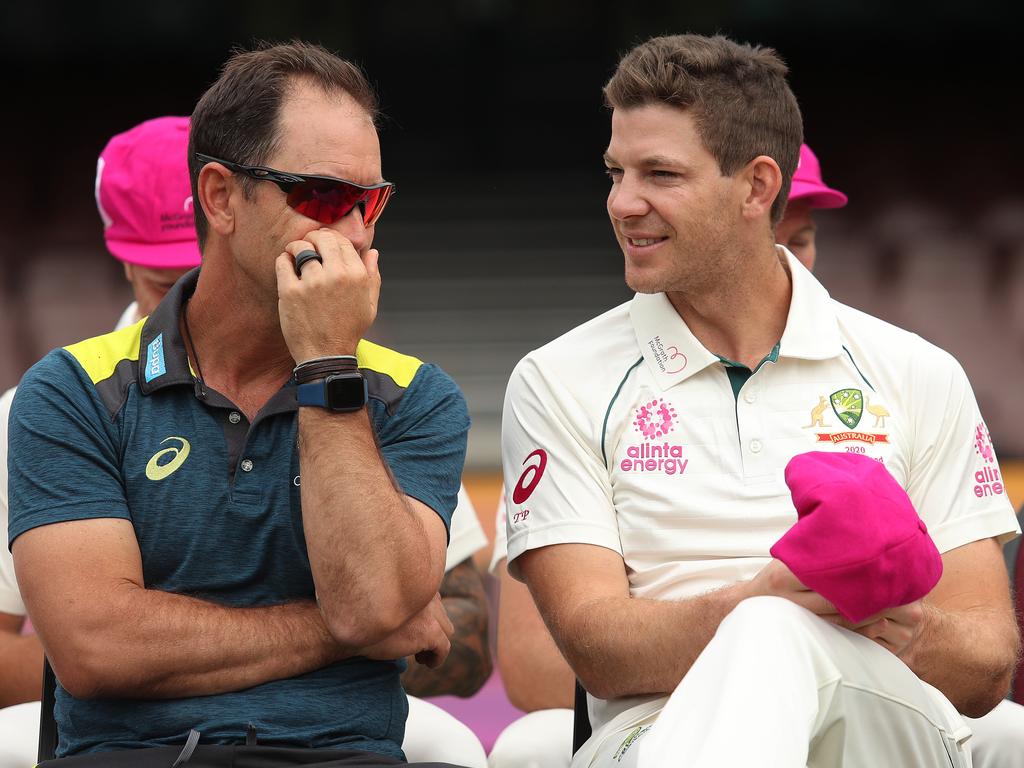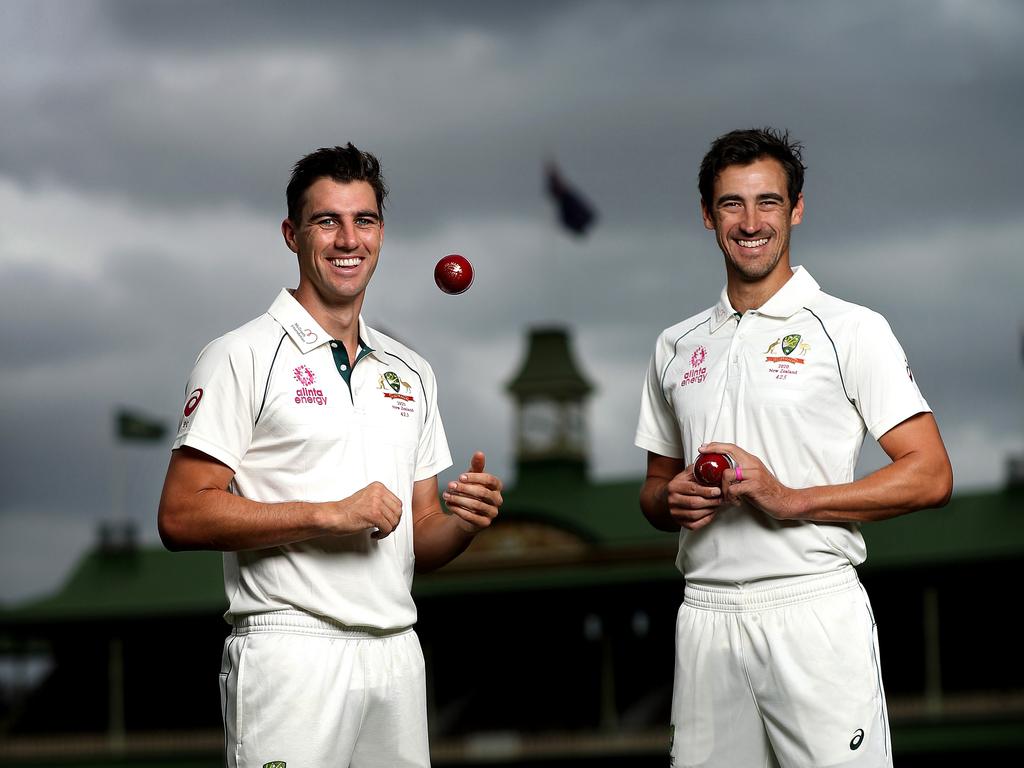Thinking outside the square has SCG facing an identity crisis

The coach threw the floor open: so, how should the team tackle the unusual contours of the Sydney Cricket Ground? The silence was broken at last by Bill Brownless. “Maybe play two spinners?” he suggested.
Such is Sydney’s reputation, built up over decades — and it has been at work again in the prelude to Australia’s third Test against New Zealand, with talk around the inclusion of Mitchell Swepson to complement Nathan Lyon.
It matters less whether it is statistically ascertainable — pitches seldom always play to type — than that it exists at all.
In scale and precedence, “The Sydney Test” has been overshadowed by its Melbourne precursor. But in preserving an identity through its unique square, the SCG keeps alive vestigial traditions vital to Australian cricket’s sense of origin.
Behind the new M.A. Noble Stand, for example, you come across a unique Australian artefact. Grey and ancient, the 120-year-old sandstone roller has taken on the qualities of a statue; yet it also looks strangely ready for use, for hooking up behind the ghost of Boxer the horse who towed it slowly back and forth in the days of Victor Trumper.
It’s a reminder that while Melbourne inaugurated the Test match, it was Sydney that properly nailed the format down, making possible epic batting feats by the excellence of its pitch.
Ned Gregory, the inaugural full-time curator, was younger brother of Australia’s original Test captain Dave. They had played together in the very first Test, in Melbourne, on a pitch almost completely bare of grass: perhaps it was his misfortune in making Test cricket’s first duck that fuelled Gregory’s desire to improve the batsman’s lot.
The SCG at first relied on a hodgepodge of soil, including from Victoria’s Merri Creek, notorious for soaking up rain and becoming unplayable.
But in 1891, Gregory took advantage of an offer from the Bulli Coal Company of soil excavated in the course of its mining activities: all he had to do was sift out the bits of coal and coke occasionally found in the mix.
How the relationship was forged is unclear, but there are evocative links to Australian history. Four years earlier, an ignition of gas at Bulli’s colliery had caused the second worst disaster in our mining history.
One of the events held afterwards to raise money for the widows and orphans of the 81 miners lost was a pioneering “Ladies’ Match” at the SCG, in which Gregory’s daughters played.
Whatever the case, the coming of Bulli to the SCG is Australian cricket’s most serendipitous moment: the new pitches turned out to offer even pace and bounce, were less inclined to absorb water, and deteriorated steadily, conducing to spin.
Bulli, then, is the golden soil that offered wealth for batting toil, personified by Trumper, Macartney, Bradman, McCabe et al all the way down to Smith and Warner — what English journalist Scyld Berry has called “the Sydney school of batsmanship”, which he considers the world’s most continuously outstanding.
It was as though they grew from the earth itself, as Dr Leslie Poidevin suggested in the Sydney Mail in October 1913: “As regards individuals, it is worthy of remark …. that the period during which the Bulli soil has been in use coincides also with the rise and development of some of the greatest masters of batsmanship the game has ever known. It has given us Victor Trumper. That will suffice.” The SCG first-class records of Sir Donald Bradman (6128 runs at 91.5) and Bill O’Reilly (183 wickets at 17.7), meanwhile, convey the scope for genius within the balance of bat and ball.
By the 1920s, the soil’s fame was such that Johnny Douglas’s English team were taken to the area it came from: the town of Bulli, it transpired ironically, had but a concrete pitch.
Bulli supplies were sent to South Africa, when that country finally abandoned matting surfaces, and England, where it was used for a pitch on the country estate of the legendary Australian businessman and fight promoter Hugh D. McIntosh.
McIntosh was so enamoured of Bulli that he gave a sack for use in the burial of an Australian soldier in the UK.
Periodically since, the traditions of curation at the SCG have been threatened by Bulli shortages. Each time, they have been rescued by fortuitous uncovering of new supplies, the most recent at Oberon.
The latest threat is different and graver, cricket arguing against a move to drop-in pitches urged by other sports, led by the Australian Football League. The Trust has formed a committee chaired by Rod McGeoch, which has been fact finding these last six months.
To their credit, the members are opposed. Cricket NSW and Cricket Australia presented thoughtful opposition, based on the advantages of nature.
“Drop-in pitches simply do not deteriorate over the four days of a Sheffield Shield match or five days of a Test,” argued CNSW. “Deterioration is key to a spinning pitch, therefore there is a real risk that moving to drop-ins will nullify the unique characteristic that the SCG is famous for, and risk it becoming just like any other ground around Australia.”
Yet cricket would be better placed to make this argument had it not already surrendered to drop-in technology in Adelaide and Melbourne, and embraced a stadium in Perth that is an advertisement for the multi-use concept.
Other sports look at cricket and wonder: now there’s a problem? Now you’re worried about “unique characteristics”? Now you’re against “sameness”?
For 20 years, cricket has fallen in with the trend in other sports towards standardising and centralising and looking like everybody else. So while naturally inclined to the protection of continuity and tradition, I can’t help feeling that the debate over the SCG is a dilemma that cricket has created for itself.
Cricket, it’s widely reported, is to have another internal argument about another convention: CA and the England Cricket Board want Test matches reduced from five days to four. “It is something that can’t be driven by emotion,” said CA chief executive Kevin Roberts a few days ago, in his best Thomas Gradgrind vein. “We’re really looking forward to digging into the facts of that.”
Not everything can be costed and weighed. And every time cricket tampers with one essence, it renders itself less able to defend others.





Malcolm Blight tells a story about gathering his charges at the Geelong Football Club ahead of an away game against the Sydney Swans 30 years ago or so.